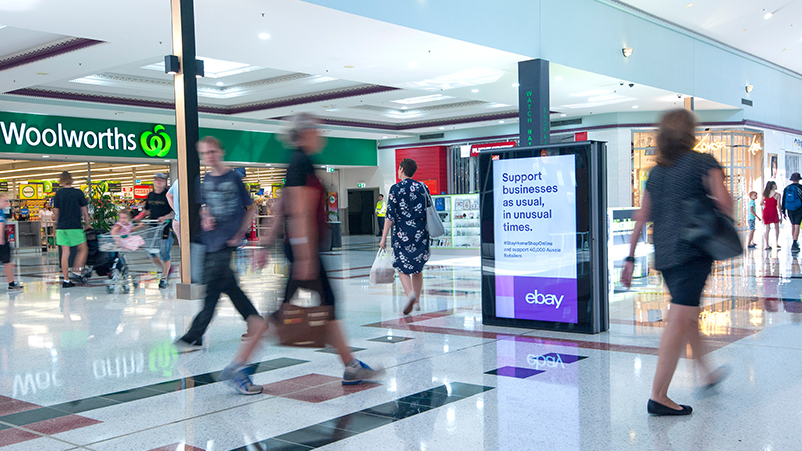Challenge herd thinking: best times to engage Australians now could be outside the home

Groundhog Day at home has an alternative. Never have we been so close to Bill Murray’s character in the movie Groundhog Day – a human who was caught in a time loop and had to repeatedly replay the same day over and over again.
The COVID-19 virus is putting our country into an isolation period, and we are all adjusting to one of the toughest times in our lives. We accept it has to be done, but uncertainty is driven by the fact that there isn’t quite a clear finish line in sight yet, even though Australia seems to be on a better path than many other countries.
The media continues to report about this pandemic in every possible way, and it seems that every second social feed is an update on the frightening reality of what’s occurring in places like the US, the UK and Italy.
Advertisers are aware that media audiences are up within the home, but are concerned about their ad placement. Is it the right time to be associating your brand communication with all this content when audiences are in these uncertain and negative mindsets?
Edelman Trust Barometer: brands critical through crisis
Some recent evidence says yes – the latest international Edelman Trust Barometer survey revealed that 62% of people felt their country wouldn’t make it through the crisis without brands playing a critical role, while 67% said they had bought a new brand solely because of the way it acted during the crisis.
Ongoing government advice is to stay home unless you need to leave for a few allowances – two of which are valuable to one’s mental health. The first is seeing suburbs flooded with lycra and people exercising. Visits to parks and recreation areas in Sydney are only down 25% versus pre COVID-19 times1,while across Australia, 38% of people are working out at increased rates in and around the home2.
As an aside, and speaking of mental health, it seems we are looking after others more than previously, with 36% checking on neighbours more often and 30% helping others with grocery shopping3.
People are on the move through lockdown
The second allowance is trips to purchase essential goods at supermarkets, butchers, pharmacists and liquor stores, and we are seeing some growth here in local areas. 10% of Sydneysiders are making daily visits to the supermarket, and 47% are shopping at least twice a week4.
From what we can ascertain, Australians are mixing it up with real variation – each day is a different supermarket, butcher, pharmacist or liquor store. Spending on food across Australia is up 50% compared to the same time last year, with the vast majority of spend occurring in physical stores.5
There has indeed been a period of hoarding, but some of the latest data suggests that spending is now about people buying more rewards to cope with the ongoing restrictions. Just look at off-premise alcohol sales being up, while food delivery services haven’t seen much of an increase to date, meaning people are choosing to stay at home and cook for themselves. Maybe they don’t like the idea of other people preparing their food. However, I also like to think Australians have more time and it’s a way of challenging themselves by taking on a new recipe.
When to engage? Challenge herd thinking
These trends open up an interesting debate – namely, that during lockdown one of the best times to engage with Australians is when they are in a moment of release and normality. And that moment currently is when they are on their way to purchase their essential goods, or get some exercise. For brands, this provides an opportunity to show a mutual understanding with audiences and capture them on a more personal, communal and united front.
Yes, advertisers are worried that Out of Home audiences are down, and in some environments they are, with trips to and from the workplace have fallen 34% on average, while travel associated with essential services and industries continues6.
But you can still reach many Australians when they are in the right frame of mind on these daily local trips. People are in a better mood when they’re in motion and they’re wanting to be out of the house more so now, to feel their best. If that’s the case, is there no better opportunity to turn this negative situation into a positive by advertising through this period? No matter what sector you are in, a good question to ask is this: what mindset do I want my advertising to engage with?
Searching for driving directions highest since March
What’s more, the latest Apple data reveals that compared to the early weeks of the crisis, more people are now searching for directions by road, foot and public transport7. In fact, search for road directions are at their highest levels since March, reaching 70% of normal levels7. This reveals that people are looking forward to eased restrictions – the first of which came into play last Friday for New South Wales, Queensland and Western Australia.
Audiences want to be out of the house – that’s the moment they feel at their best. Catching people’s attention while they are allowed outside and actually enjoying the here and now is a good way to reach audiences, and oOh!media is well-placed to target these new daily trips during these times – we have the largest portfolio of roadside (street furniture and billboards) and retail products across metro, suburban and regional Australia, backed by the best in-market data to target these journeys.
It all goes to show that even with these restrictions, every day doesn’t have to be like Groundhog Day.
